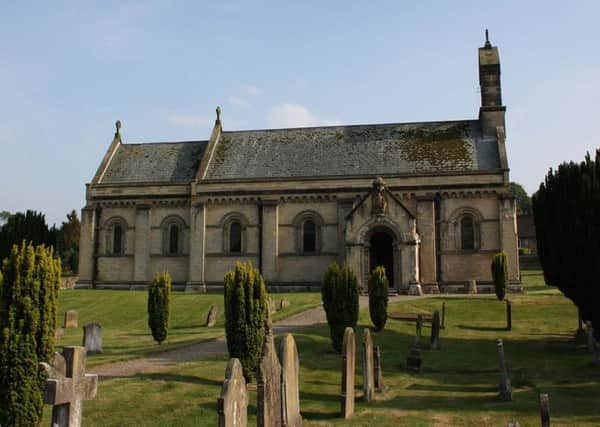Your Day Out: Rewarding experiences


Beyond Appleton-le-Street, turn right by the old forge, seen off left. The blacksmith’s forge closed in 1969. Near the telephone kiosk and post-box you’ll admire the fine church, but to your left is the village hall. As you’ll recognise, it used to be the village school built 1871, but in 1953 it had only 21 pupils and had to close in 1960 with only 17 children. It became the village hall, and a village hall committee was formed in 1968. As you explore Barton-le-Street you’ll appreciate that it’s an ancient charming village.
The well-kept village green opens up before you, and if you cross the lane to your left you reach the Manor House. One of the village pumps was near Manor Farm, and another near Low Farm.
Advertisement
Hide AdAdvertisement
Hide AdPass Broats Cottage and go right to Chestnut House, and re-joining the lane you’ll discover the Millennium Seat. It reads below: ‘1923 Arthur Crisp - 1996’. Sit here and look across the beautiful village green. You can sense the peace and community spirit. The green is surrounded by the church; the old school room; the Manor House; the Old Rectory; historic farms, and houses of Yorkshire stone.
The Rectory is where you see The Red House. It became The Rectory in 1958 and remained so until 2004 when the new Rector took up her post based in Amotherby, and it was agreed that The Red House should become the Bishop’s House. Opposite here, you’ll see on the village green a sycamore planted in 1980. This was given to the village by Robert Teasdale as a prize for gaining an Award of Merit in the Best Kept Village competition of 1980. Robert also planted a white chestnut in 1977 to mark the Queen’s Silver Jubilee, and thought it would balance a pink chestnut to mark her coronation in 1953. These were planted on either side of the drive to the Old Rectory.
To your left is Fir Tree House, then beyond left walling is Squirrel Cottage and Low Farm. Bear left down the lane to the outskirts of the village to view the Old Station House which is now a private home. The railway station closed to passengers in 1931. It also closed to freight goods in 1964.
Village shops and transport have changed village life. Supermarkets and fast travel have taken away much that villagers loved. However, village pride obviously remains high, and folk live as a community.
Advertisement
Hide AdAdvertisement
Hide AdReturn up the lane by The Gables and Lower Field, and the church lies to your right beyond walling. Explore the steep hill leading to houses, and return to the church’s main entrance. The Old Post Office is to the right, as you walk to the church gates and detailed information board. How long before the telephone kiosk and postbox vanish in the name of progress? Villages such as this were so independent and self-sufficient. They grew their own crops, kept cows, and sold milk, butter and eggs, along with sweets, soft drinks and tobacco, plus other essentials.
Take the path to the church of St Michael and All Angels. Lime trees used to screen this handsome edifice, but they have been replaced by yew trees. Outside the west porch is a large Anglo-Saxon cross base made from a single gritstone block.
The church you see today was built in 1870-71, but is probably at least the third church on this ancient site. As you enter, do purchase a leaflet for 50p which ensures you fully appreciate this truly amazing church. When the Victorians rebuilt the church they preserved and re-used the Romanesque sculpture within the new structure.
The result is this beautiful 19th century church, richly decorated with both Victorian sculpture, and a unique collection of over 250 pieces of 12th century sculpture. It remains one of the most elaborate and complete late-Romanesque sculptural schemes in Yorkshire.
Advertisement
Hide AdAdvertisement
Hide AdThe church is built from local Hildenley limestone re-used from the Norman church, with external details in sandstone.
Sitting under the triple-light east window, the stone altar which is now covered, is heavily carved in a similar fashion to the font. To the right of the altar is a pillar piscina (water drain), comprising both Victorian and re-used Romanesque carving.
Examine the Romanesque doorways. Down the sides of the doorway are rare, decorated doorjambs. The arch of the north doorway is surrounded by carved heads and beast. Can you find the deer hiding amongst the vine pattern? Some of the church’s most unusual carvings are located in the porch.
You could spend hours devoted to seeking the gems within this special place of worship. It will leave you speechless! Take time, and return home refreshed by the rewarding experiences.